The region of Madrid is home to important world heritage sites, which are part of the amazing tourist attractions that lie throughout its territory. That is why today, it is one of the most visited communities in Spain, who come to enjoy its authentic culture, its landscapes and its exquisite cuisine. In this tourist map of the region of Madrid, we invite you to tour and know all its corners and we take you to those most spectacular, where you can carry out a myriad of activities, apart from active tourism and hiking.
Tourist map of the Region of Madrid
Contents
Few regions in the world manage to represent a country as well as the region of Madrid does with Spain. The Spanish capital, as well as the entire area covered by the Madrid region, contains a good part of the history of one of the most important countries in Europe. In the region of Madrid you can find many tourist sites of great attraction and interest to visitors. Before starting your trip, you can find our Madrid tourist guide, which will show you everything you need to know about the region so that you know where to go. Once in the city, you can start your tour by visiting the most famous places, such as Puerta de Alcalá or Plaza Cibeles with its iconic fountain. The best thing about the region of Madrid is that you can find everything from old buildings, with a wealth of history and art, to modern buildings, typical of a cosmopolitan city.
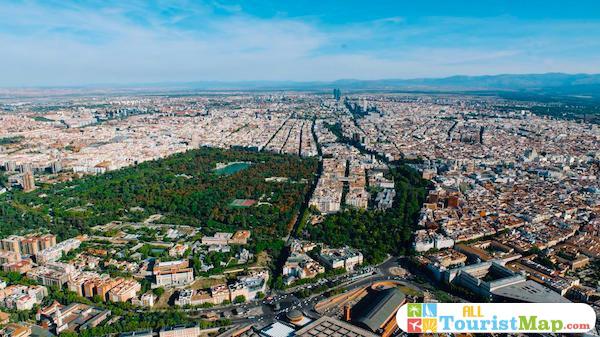
The Madrid region is a densely populated metropolitan area that revolves around the city of Madrid. This represents an advantage for visitors, as the distances to be covered between the municipalities are short compared to other regions. The great transport system allows us to reach the different areas of interest that exist. We can look for the tourist bus service to take us to visit the most important places in the region or we can also locate the street map of the city to know where we should get to a specific site. In the region of Madrid we find a world full of spaces that contain all the cultural richness of a country wonderful for its history. Visiting this town, we can delight all our senses. The gastronomy, the climate and the excellent atmosphere that we find in the region of Madrid will allow us to live a unique and unrepeatable experience.
Tourist guide of the region of Madrid
The region of Madrid is suitable for any age group, young people, children and adults, as its urban dynamism and the warmth of its culture add authentic elements to all its tourist attractions throughout the town, presenting not only places of leisure and activity, but also ancient corners in all the surroundings of its historic centre, inviting thousands of tourists to discover the antiquity that accompanies it. Finally, it is about travelling and getting to know most of the community of Madrid and that is why in this tourist route we describe and indicate a series of places whose visit becomes essential.
What to visit in the Madrid region
El Capricho Park
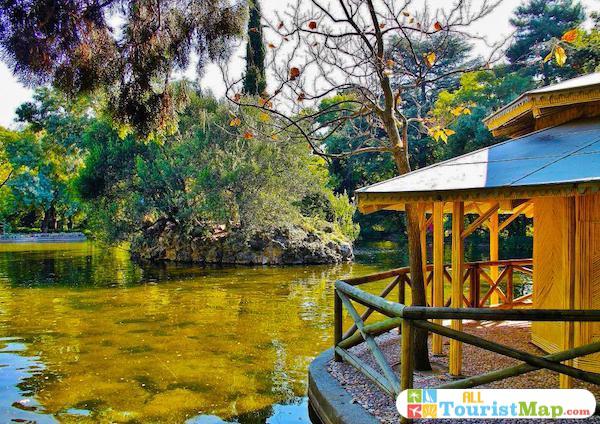
The famous Parque de el Capricho is located in the northeast of the city of Madrid, specifically in the Alameda de Osuna neighborhood in the Barajas district. It was built by order of the Duchess of Osuna from 1787. It covers an area of 14 hectares. This park is a green area that you must visit. Inside you can enjoy a pleasant afternoon, walking through its paths. The park has several buildings, such as the palace of the Dukes of Osuna and the ballroom, the chapel, the exedra of the emperors’ square and the maze of bushes are other places you can visit. There you can also see a large number of swans and ducks that perch on the waters of the numerous ponds and streams that cross it. Since 2005, during the spring-summer-autumn season, events such as concerts, works of art and dances are organized in the so-called “whimsy afternoons”. So if you are in Madrid on your holidays, this park will make you enjoy an otherwise pleasant afternoon.
Reina Sofia National Museum and Art Centre

For art lovers, a visit to this museum is a must. Better known as the Museo Reina Sofía, this museum houses a large collection of 20th century and contemporary art. It is located in Calle de Santa Isabel, 52-28012. The museum covers an area of more than 8 square km. The building in which it is located was the old General Hospital of Madrid, which was in service for more than 3 centuries. Over the years, the building has undergone modifications, extensions and improvements that give it its current appearance. In the museum we can find works by the most important Spanish artists, such as Picasso, Dalí and Miró, as well as works by international artists, such as the Mexican Diego Rivera and the Venezuelan Jesús Soto. The best thing about the museum is that it organizes its works in different areas according to the period and the artistic trend that emerged in it. Going to this museum is to tour the wonders of modern art of artists who went down in history. So, if you visit the region of Madrid, don’t forget to take a walk through this sensational museum.
Temple of Debod
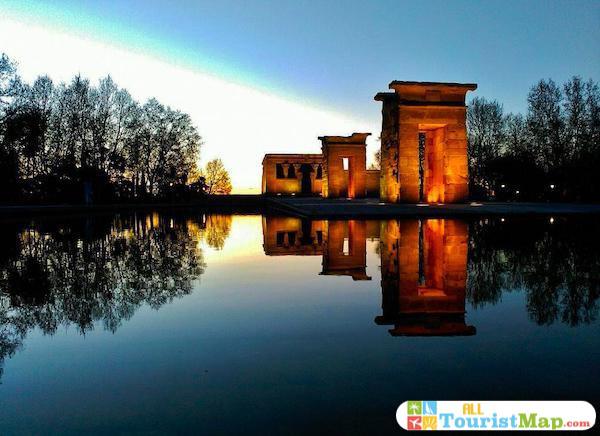
This old Egyptian building was relocated in the city of Madrid in 1968 in a gesture of the government of Egypt at the time to Spain. The temple of Debod was located in the town of Debod, from where it takes its name, near the banks of the Nile River in lower Nubia, southern Egypt. The origin of the temple dates back to the time of the Middle Empire, where it was used as a place of worship. Thanks to the efforts made by UNESCO to prevent the historical monuments located in the Nubia from disappearing as a result of the construction of the Aswan Dam, Egypt ordered the temple to be moved to Spain. It is located in the Plaza de España, where the Mountain Barracks used to be. To walk around the interior of the temple is to observe vestiges of a powerful and extremely interesting civilization.
Sierra de Guadarrama National Park

This natural park is located in the provinces of Madrid and Segovia. It is an extensive protected area covering some 30,000 hectares of territory. It was declared a national park in 2013. It is one of the most visited natural parks in Spain. In the mountains we can find a wide variety of species, both animal and plant, which are part of different types of ecosystems that coexist in a piece of land that is magical for those who visit it. The sierra has an important natural value, as it is home to several species in danger of extinction. One of the reasons why it was elevated to a national park was precisely to protect not only the species that live there, but also the 11 ecosystems that exist in the place. The park has a large network of roads and trails, well identified, so that visitors can travel to different places. It has 3 ski resorts, several passes where you can practice mountain climbing and also parachuting. You can enter the park by leaving Madrid, taking two of the highways that lead to it, the A-6 and the M 607.
Warner Park Madrid
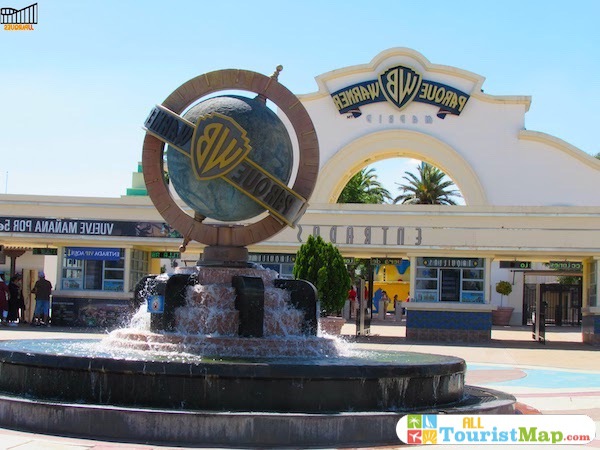
This sensational theme park is located in San Martín de la Vega, a town in Madrid. It has 42 attractions that will leave you amazed. Among them is the fourth tallest drop tower in the world. The park is divided into 5 theme areas that recreate several of the film productions made by Warner Bros. and also several areas that resemble a little bit the style of some areas in the United States, such as Beverly Hills or New York. In 2006 it was recognized as the Safest Theme Park in Spain, a title it still holds. The park’s facilities have all the necessary amenities to make visitors feel at ease. Restaurants, shops, toilets, wheelchair rental, toilets, among many other services that will make you enjoy every moment. This theme park is perfect for the whole family. It opens from Friday to Monday from 11:30 am to 8:00 pm.
Santiago Bernabeu Stadium

If you visit the Madrid region, it is essential that you visit the Real Madrid stadium. It doesn’t matter if you are a football or team fan, to walk around the stadium is to recreate the view with a stadium that has become a symbol of the city. It is located in Concha Espina Avenue. It was opened in 1947 and houses the Spanish football team Real Madrid. The stadium has a capacity for more than 80,000 people. It has several shops where you can take a souvenir of the team or buy shirts, sweaters and so on. You can also enter the club’s museum where you can learn a little about the history of the team. Going to Madrid and not having your picture taken in front of the stadium makes your trip a bit incomplete.
CaixaForum Madrid

An interesting cultural centre that you can visit in the region of Madrid. It is dedicated to temporary art exhibitions. It is part of the Fundación Bancaria Caja de Ahorros y Pensiones de Barcelona, better known as Caixa, which manages other museums throughout Spain. The building where the museum is located has a particular design. It was, at the time, an electricity generation plant that supplied the southern sector of Madrid’s old town. This building is one of the few remaining factory buildings in the old part of Madrid. The forum is located on the Paseo del Prado. It stands out for its peculiar facade.
Sorolla Museum

This museum was the former home of one of the most important Spanish artists of all times, Joaquín Sorolla y Bastida. It is located in one of the palaces on the Paseo del General Martínez Campos in Madrid. It was inaugurated in 1932, as part of the effort of Sorolla’s wife, who since 1925 began to make the necessary arrangements so that the work of her husband had a place where it could be observed and admired. Inside the museum you can see a good part of the artist’s work, in which his paintings and sculptures stand out. Several of the belongings the Sorolla family had during their stay in the house are also displayed. The museum works from Tuesday to Saturday, from 9:30am to 8pm.
Almudena Cathedral in Madrid
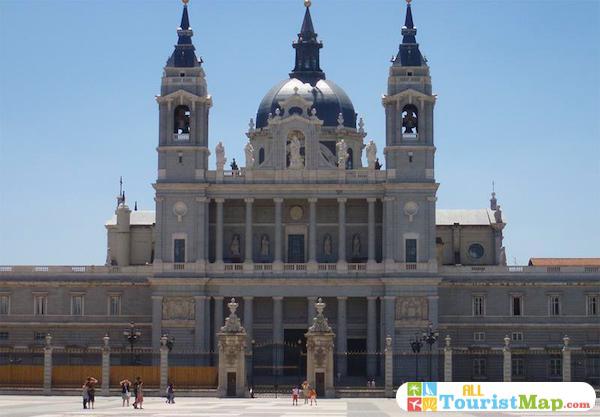
A temple of Catholic worship dedicated to the Virgin Mary, of great beauty and magnitude that you can visit when you go to the region of Madrid. This cathedral is located in Calle de Bailén, near the Campo del Moro. It was built on the site of what was an old mosque, between the late nineteenth and late twentieth centuries. It was consecrated by Pope John Paul II, being the only cathedral in Spain to receive such an honor. Inside the cathedral you can enjoy its imposing nave, stained glass windows with beautiful colours, several chapels, large domes and other places of great interest. The cathedral is the seat of the archdiocese of Madrid. Its facade faces the Royal Palace. For Catholics, this cathedral is of great value. So, if you are a cathedral lover, you must pass by the Almudena Cathedral.
Cibeles Square
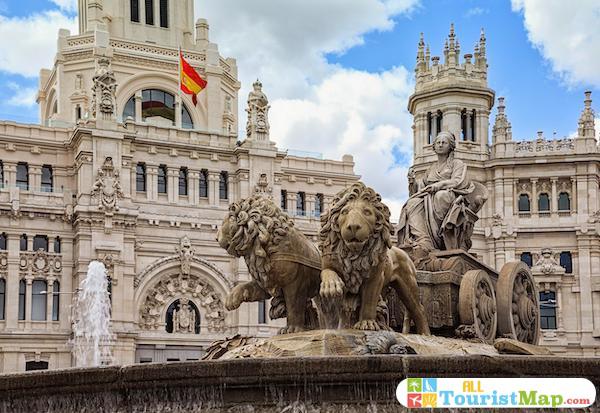
Few squares can represent a city as much as the Plaza de Cibeles. This square is a symbol of the city of Madrid and the whole region. Many celebrations held in the city end up in the Plaza Cibeles. Located at the intersection of Alcalá Street with Paseo de Recoletos and Paseo del Prado, it serves to divide the districts of Salamanca, Centro and Retiro. The Cibeles fountain was sculpted in 1782 and is the most famous component of the square. In the surroundings there are several historical buildings, such as the Army Headquarters, the Palace of Communications or the Bank of Spain. To walk around the square is to learn a little more about the rich history of the Spanish capital. Its imposing beauty dazzles any visitor.
Map of hotels in Madrid region
As one of the most important Spanish communities in Europe and Spain, the region of Madrid has a good hotel network that is distributed throughout its municipalities and provinces, offering variety in terms of accommodation and luxury, having basic hotels and other larger hotels with ancient or modern architecture, among which you can choose according to your preferences. In our map of hotels in the region of Madrid, we recommend the Hotel Atlantico Madrid, located in Gran Vía Street, a complex with an elegant and sober architecture near the historic center and the Plaza Mayor.
